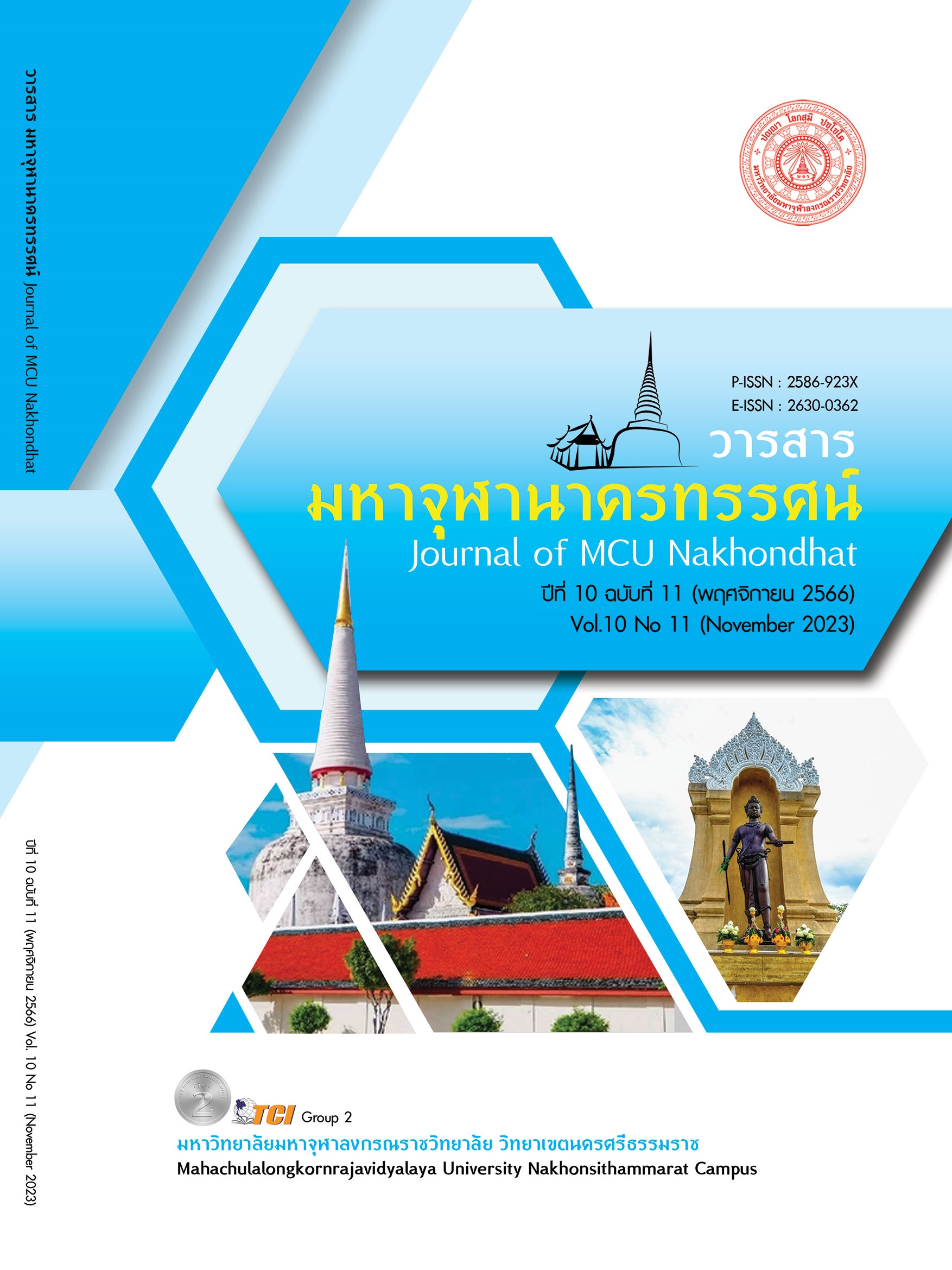แนวทางการยกระดับความสามารถในการจัดการความรู้ของวิทยาลัยอาชีวศึกษา และเทคโนโลยีกว่างซี ประเทศสาธารณรัฐประชาชนจีน
Main Article Content
บทคัดย่อ
การวิจัยครั้งนี้มีวัตถุประสงค์เพื่อ 1) ศึกษาการยกระดับความสามารถในการจัดการความรู้ของวิทยาลัยอาชีวศึกษา 2) ประเมินคุณลักษณะการยกระดับความสามารถในการจัดการความรู้ของวิทยาลัยอาชีวศึกษา
3) ศึกษาแนวการยกระดับความสามารถในการจัดการความรู้ของวิทยาลัยอาชีวศึกษา และเทคโนโลยีในมณฑลกว่างซี ประเทศสาธารณรัฐประชาชนจีน ใน 7 ด้าน ประกอบด้วย 1) ด้านการบ่งชี้ความรู้ 2) ด้านการสร้างและแสวงหาความรู้ 3) ด้านการจัดความรู้ให้เป็นระบบ 4) ด้านการประมวลและกลั่นกรองความรู้ 5) ด้านการเข้าถึงความรู้ 6) ด้านการแลกเปลี่ยนเรียนรู้ 7) ด้านการเรียนรู้ ประชากรที่ใช้ในการวิจัย ได้แก่ วิทยาลัยอาชีวศึกษาและเทคโนโลยีในมณฑลกว่างซี ประเทศสาธารณรัฐประชาชนจีน กลุ่มตัวอย่างที่ใช้ในการศึกษาครั้งนี้ ได้แก่ ผู้บริหาร และอาจารย์ประจำการ วิทยาลัยอาชีวศึกษาและเทคโนโลยีในมณฑลกว่างซี ประเทศสาธารณรัฐประชาชนจีน
โดยการสุ่มแบบเจาะจง รวมทั้งสิ้น 300 คน กลุ่มผู้ให้ข้อมูลการสัมภาษณ์ ได้แก่ อธิการบดีหรือรองอธิการบดี ผู้บริหาร และอาจารย์ประจำการ วิทยาลัยอาชีวศึกษาและเทคโนโลยีในมณฑลกว่างซี รวมทั้งสิ้น 30 คน ผลการวิจัยพบว่า แนวทางการยกระดับความสามารถในการจัดการความรู้ของวิทยาลัยอาชีวศึกษาและเทคโนโลยีในมณฑลกว่างซี ประเทศสาธารณรัฐประชาชนจีน มีการส่งเสริมให้บุคลากรเรียนรู้ด้วยการศึกษาเอกสาร ความรู้ต่าง ๆ และนําไปใช้ในการทำงานเปิดใจยอมรับความรู้ใหม่ ๆ อยู่เสมอ สนับสนุนให้มีการนําความรู้ที่ได้จาก
การฝึกอบรม หรือจากการสัมมนามาประยุกต์ใช้ในการปฏิบัติงาน สนับสนุนให้มีการนำความรู้ไปสร้างสรรค์งานใหม่ ผู้บริหารมีการวางโครงสร้างความรู้เพื่อเตรียมพร้อมสำหรับการเก็บความรู้อย่างเป็นระบบ มีการประชาสัมพันธ์แหล่งเข้าถึงความรู้ให้แก่บุคลากร การเสริมสร้างกำลังใจ การเปิดโอกาสในการพัฒนาศักยภาพของบุลากรได้แสดงความรู้ความสามารถอย่างสร้างสรรค์ต่อองค์กร
Article Details

อนุญาตภายใต้เงื่อนไข Creative Commons Attribution-NonCommercial-NoDerivatives 4.0 International License.
เอกสารอ้างอิง
บุญดี บุญญากิจ และคณะ. (2547). การจัดการความรู้จากทฤษฎีสู่การปฏิบัติ. กรุงเทพมหานคร: ซีเอ็ดยูเคชั่น.
พรธิดา วิเชียรปัญญา. (2547). การจัดการความรู้พื้นฐานและการประยุกต์ใช้. กรุงเทพมหานคร: เอ็กซ์เปอร์เน็ท.
Collison, C. & Parcell G. (2004). Learning to Fly: Practical Knowledge Management from some of the world's leading learning. London: Century Press.
Hill, J. & Mcshane A. (2008). Principles of Management. New York: McGraw - Hill.
Hollander, E.P. (1978). Leadership in Dynamies: A Practical Guide to Effective Relationships. New York: The Free.
Inkpen. (1996). Creating Knowledge through collaboration, California Management Review. New York: Authur P. Brief.
Koontz, H. & Weihrich, H. (1988). Management. 9th ed. New York: McGraw - Hill.
Liebowitz Thomas, J. (1990). Beckman. Edition 1st Edition. First Published 1998. eBook Published 11 September 2020. Boca Raton: Boca Raton C.D.
Muchinsky, P.M. (1997). Psychology Applied to Work An Introductions to Industrial and Organizational Psychology. 5 th ed. California:Brooks/Cole. Organization. 2 th ed. West Sussex: Capstone.
Peter, M. . (1990). The fifth discipline :The art and practice of the learning organization. London: Century Press.


